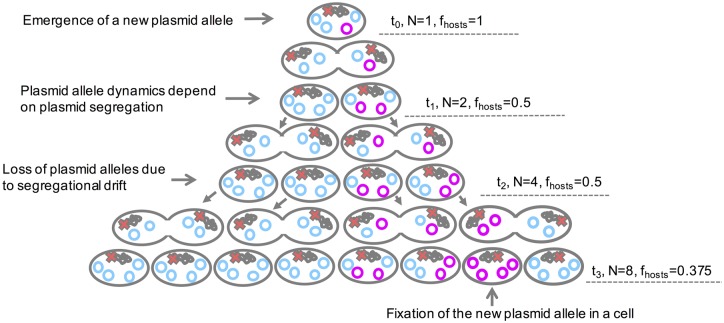Fig. 6.
An illustration of the consequences of segregational drift to plasmid allele dynamics. The illustrated PCN is four and its segregation into daughter cells is balanced (i.e., the daughter cells inherit an equal number of plasmids). In the depicted scenario, one allele emerges on the chromosome (red X) and another allele emerges on the plasmid (magenta) at t0. Both alleles are neutral (i.e., s = 0). The population size (N) and the frequency of hosts (fhosts) over three generations are presented. The chromosomal allele is inherited into all daughter cells, such that it is present in the total population. Random segregation of the plasmid genotypes leads to decrease in the number of hosts. At t3, only a small minority in the population harbors the new plasmid allele. In the absence of selection for the plasmid allele presence, the new plasmid allele is deemed to remain at a very low frequency within the population (or be lost). Note.—This is a simplistic example that does not include loss of host cells due to drift and it does not include consideration of recombination among plasmids.

